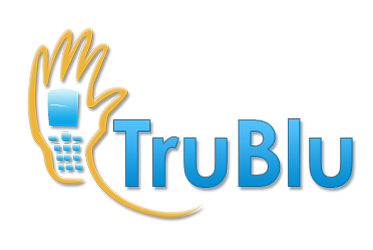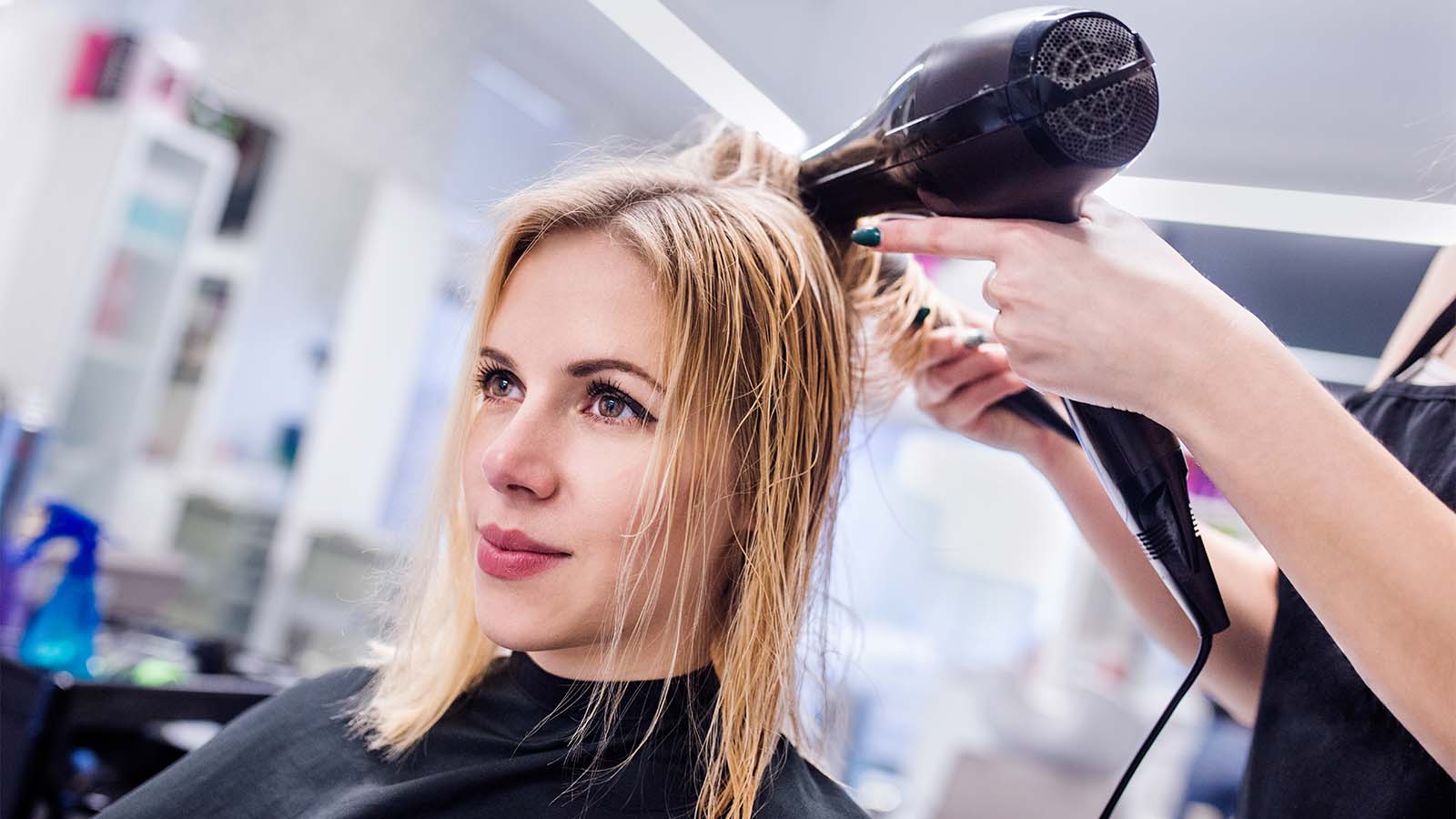In today’s competitive market, having a strong online presence is essential for any business, including your hair salon. Investing in search engine optimization (SEO) can significantly boost your salon’s online visibility, ultimately leading to more bookings and increased revenue. The key to mastering SEO for hair salons is understanding how to outshine your competitors, improve your Google search rankings, and attract new clients using relevant keywords and user-friendly website designs.
As a salon owner, incorporating SEO can initially feel overwhelming, but once you grasp the basics, the benefits will soon become clear. This article will provide essential tips for maximizing your hair salon’s online presence through effective SEO strategies. We’ll cover vital components, such as optimizing your website’s content, title tags, meta descriptions, and ensuring it’s mobile-friendly, fast, and secure.
Diving into SEO for your hair salon would also involve claiming and optimizing your Google My Business profile, allowing potential clients to easily find you when searching for salons in their area. By implementing the tips and strategies discussed in this article, you’ll quickly see your salon climb in search engine rankings, resulting in more clientele and a stronger online presence.
Table of Contents
ToggleUnderstanding SEO for Hair Salons
SEO, or Search Engine Optimization, is the process of optimizing your hair salon’s website to achieve higher rankings in search engine results. It is a vital component of online marketing strategy that takes into account how search engines work, what potential clients are searching for, and how to improve the visibility of your website.
As a hair salon owner, you should be aware that incorporating SEO for your business is essential in attracting new clients and increasing revenues. Many people rely on search engines like Google to find and book hair salon services, so being on the first page of search results can bring in a significant number of clients.
One key aspect to focus on is local SEO. This is particularly important for hair salons, as customers tend to look for businesses in their immediate vicinity. Start by claiming and optimizing your Google My Business listing to ensure potential clients can easily find your salon’s contact information, location, and reviews. Additionally, providing accurate business hours, updating your salon’s website with locally targeted keywords, and incorporating specific geographic information about your service area can all contribute to stronger local SEO.
To further optimize your salon’s web presence, consider researching and incorporating the right keywords into your website content, title tags, headlines, and meta descriptions. These keywords should be relevant to the services you offer and tailored to attract your target audience. Additionally, try to make your website mobile-friendly, fast, and secure, as these factors can significantly impact your rankings in search engine results.
Incorporating various SEO techniques, such as creating high-quality content with engaging copy, building authentic backlinks to your website, and regularly updating your salon’s blog with helpful hair care tips or recent promotions, can also help bolster your search engine rankings and visibility.
By understanding and implementing even the most basic SEO principles for your hair salon, you can increase your visibility to potential clients and improve your overall online presence. Remember, a well-optimized website translates into more customers, bookings, and revenue for your salon.
Website Optimization
Mobile-Friendly and Secure Website
In today’s digital world, it is essential to optimize your salon website for mobile devices. As more people use their smartphones for online searches and browsing, a mobile-friendly website is crucial to reach your audience. Ensure your website design is responsive, adapting seamlessly to different screen sizes and devices. Utilize tools like Google’s Mobile-Friendly Test to check your salon website’s mobile compatibility.
Additionally, it’s vital to secure your website by installing an SSL certificate. This not only protects user’s information, but it also improves your search ranking, as Google considers website security as a ranking factor.
User Experience
Great user experience is an essential factor in website optimization. A well-designed and easy-to-navigate website keeps potential clients engaged, increases conversions, and encourages return visits. To improve user experience on your salon website, consider the following suggestions:
- Clearly display your services, pricing, and promotions on the homepage.
- Use high-quality images and captivating visuals to showcase your services and salon atmosphere.
- Create a simple and clear navigation menu to help visitors find what they are looking for effortlessly.
- Make sure your contact information and appointment booking options are easily accessible.
Page Load
Fast-loading pages are crucial for keeping users engaged and ensuring they don’t leave your website due to slow loading times. Google also considers page load speed as a ranking factor. To optimize your salon website’s page load speed, follow these best practices:
- Compress images and use proper formats (like WebP) to reduce file sizes without compromising quality.
- Enable browser caching to reduce server load and improve load times for repeat visitors.
- Minify CSS, JavaScript, and HTML files to reduce their size and speed up page load times.
- Use a content delivery network (CDN) to serve static files from servers closer to your users’ locations.
By implementing these optimization strategies, you can create a mobile-friendly, secure, and user-friendly salon website with speedy page loads, ultimately improving your salon’s online visibility.
Keyword Research and Content Strategy
Long-Tail and Broad Keywords
Keyword research is a crucial aspect of your hair salon’s SEO strategy. You should focus on identifying both long-tail and broad keywords relevant to your hair salon. Long-tail keywords consist of more specific search phrases, usually with three or more words, such as “blonde balayage hair salon.” On the other hand, broad keywords are more generic, like “hair salon.”
To conduct keyword research, you can use tools like Google Keyword Planner, Ubersuggest, or Ahrefs. These tools will help you identify long-tail and broad keywords with high search volume and low competition. Remember to include keywords about your hair salon’s services, location, and unique selling propositions.
Make a list of your target keywords and organize them based on priority, search volume, and competition. This will help you optimize your content effectively for search engines and user intent.
Creating Informative and Engaging Content
Once you have identified the right keywords, it’s time to create informative and engaging content that appeals to your audience. Develop content that addresses your potential clients’ questions, concerns, or interests in hair services and styles.
To provide value to your readers, consider including the following types of content:
- Blog posts: Write informative articles about hair care tips, styling ideas, and popular trends. Incorporate your keywords naturally within the headlines, subheadings, and body text.
- Service pages: Develop detailed pages about your hair salon’s services, staff, and unique offerings. Ensure that these pages are optimized with your target keywords and provide valuable information for potential clients.
- FAQs: Create a section on your website dedicated to answering frequently asked questions related to your salon services, procedures, and prices.
- Testimonials and case studies: Showcase your hair salon’s success stories to build credibility and trust among potential clients.
When creating content, always prioritize quality and user experience. Remember to optimize your content with relevant keywords, but avoid keyword stuffing, as it can hurt your SEO efforts. Instead, maintain a natural flow of keywords and focus on providing value to your audience. Regularly updating and adding new, high-quality content to your website will keep visitors engaged and help improve your search engine rankings.
On-Page SEO Techniques
In this section, we’ll discuss several critical on-page SEO techniques to improve your hair salon’s search engine ranking. By implementing these strategies, you’ll attract more organic traffic and increase the visibility of your hair salon online.
Meta Descriptions and Titles
Meta descriptions and titles play a vital role in attracting users to your website. They provide a brief summary of your site’s content and can entice potential customers to click on your link within search engine results.
- For your meta title, include your primary keyword (e.g., “Hair Salon in [City]”) and keep it within 60 characters.
- Craft a compelling meta description (approximately 155 characters) that includes your keyword(s) and highlights the value of your salon’s services.
Internal Linking
Internal linking improves the overall user experience by helping them easily navigate your site and find relevant information. This practice also helps search engines understand your site’s structure and determine the importance of individual pages.
- Link to other related pages on your site, such as blog posts, services, or contact information.
- Consider using descriptive anchor text that reflects the linked page’s content.
Optimizing Salon Services and Location
Optimizing your website for both your salon services and location is crucial for attracting local clients.
- Create separate pages for each service your salon provides (e.g., haircuts, coloring, styling).
- Include the service-related keyword(s) in page titles, headings, and content.
- Add your salon’s location (city or neighborhood) to page titles, meta descriptions, and throughout the content.
- Incorporate location-specific keywords for nearby attractions or landmarks to capture potential clients searching in your area.
- Submit your salon to local business directories and Google My Business to improve your local search presence.
By implementing these on-page SEO techniques, you’ll improve your hair salon’s online visibility and attract more clients through search engines.
Local SEO for Hair Salons
Google Business Profile
To improve your hair salon’s local SEO, start by claiming and optimizing your Google Business Profile. This allows your salon to show up in Google Maps and local search results. Make sure to provide accurate information, including your business name, address, phone number, hours of operation, and high-quality photos. Also, add relevant categories and a detailed description of your services to help potential clients find your salon. Regularly update your profile to ensure its accuracy and improve your chances of appearing in the Map Pack.
NAP Citations and Local Business Directories
Consistent Name, Address, and Phone number (NAP) information is crucial for local SEO. Ensure your NAP details are accurate across all platforms including your website, social media profiles, and business directories like Yellow Pages. Additionally, submit your business information to local directories for increased exposure and credibility. Remember to stay consistent with your NAP information, as inconsistencies may negatively impact your search rankings.
Reviews and Social Proof
Encourage your clients to leave positive reviews on platforms like Google, Yelp, and other relevant review sites. Reviews play an essential role in boosting your salon’s online reputation and search rankings. Respond to both positive and negative reviews in a professional manner, as this demonstrates your commitment to customer satisfaction. Leverage social media platforms to showcase your work and strengthen social proof. Engage with your audience by sharing tips, promotions, and client transformations to establish a loyal customer base and boost your salon’s local SEO.
Off-Page SEO Strategies
Backlinks and Link Building
To improve your hair salon’s off-page SEO, focus on building quality backlinks to your website. These links are like votes of confidence from other websites, signaling to search engines that your content is valuable and relevant. Here are some ways to earn backlinks:
- Forge partnerships with local businesses and ask them to link to your website.
- Create high-quality content that others may want to reference and link back to.
- Use professional directories and citation websites like Yelp and Yellow Pages to list your salon.
Remember, the goal is to earn backlinks naturally, so avoid purchasing or using spammy tactics.
Guest Posts and Digital Marketing
Another off-page SEO strategy is to contribute guest posts to industry-specific blogs or digital magazines. By offering valuable insights and linking back to your website, you’ll generate additional backlinks, expand your salon’s digital presence, and reach a wider audience. Follow these tips:
- Research websites or publications that accept guest posts in the haircare or beauty niche.
- Create unique, high-quality content that appeals to the target audience.
- Include a brief author bio and link back to your website.
Pitch your ideas to the blog owner and always respect their editorial guidelines.
Social Media Presence
Leaving a mark on social media platforms like Facebook, Instagram, and Twitter plays a crucial role in growing your salon’s online presence. Through consistent engagement and content sharing, you can increase brand awareness, improve off-page SEO, and attract more clients. Implement these strategies:
- Share and post relevant content regularly, such as haircare tips, product recommendations, and promotions.
- Engage with your audience by responding to comments, questions, and messages.
- Collaborate with influencers in the haircare industry to gain exposure and attract followers.
- Utilize hashtags related to your salon to increase the visibility of your posts.
Your off-page SEO efforts will influence your salon’s overall online presence, so make sure to invest in these strategies for better search engine rankings and increased brand visibility. Remember, you are aiming for a professional tone, so avoid exaggerating or making false claims about your salon’s services on any platform.
The Value of Internal Linking
In your hair salon’s SEO strategy, internal linking plays a vital role in guiding users through your website and helping search engines understand its structure. With well-planned internal linking, you can create a seamless user experience and improve your website’s search engine rankings.
When you add hyperlinks between the pages on your website, you create a strong site architecture that enhances usability. As a result, your clients can easily navigate between your service offerings, pricing, and appointment booking pages, keeping them engaged and onsite for a longer period.
Internal linking also helps spread link equity. This involves distributing the authority of your website’s backlinks across its pages, which can boost the visibility of your important content in search engine results. For example, you can link from your hair salon’s high-ranking blog post about hair care tips to your services or products page to drive more traffic and increase its ranking potential.
Moreover, strategic internal linking can improve crawl efficiency for search engines like Google. By reducing crawl depth and making it easier for search bots to find and index your content, your website becomes more visible to potential clients searching for hair salon services.
Keep these benefits in mind as you build your hair salon website and optimize it for search engines. By implementing internal linking, you’ll create a well-organized site that not only appeals to your clients but also positively impacts your online visibility and search rankings.
Tracking SEO Performance
Google Analytics for Measuring Traffic
As a hair salon owner, you should utilize Google Analytics to track the organic traffic coming to your website. This valuable tool can show you how many users are visiting, their geographic location, and the pages they interact with the most. By monitoring these metrics, you can optimize your salon’s SEO strategy and understand which methods are most effective for driving growth.
First, set up a Google Analytics account and install the tracking code on your website. Spend some time familiarizing yourself with the platform and what metrics it measures. Pay special attention to the Acquisition and Behavior sections to get an understanding of the sources of your traffic and how users engage with your site.
Conversion Rate and Revenue
Measuring the conversion rate helps you determine the effectiveness of your SEO efforts. In the context of a hair salon, a conversion might be a booked appointment, an inquiry through a contact form, or a newsletter signup. Conversion rates can be computed by dividing the total number of conversions by the number of users visiting your site over a given period. A higher conversion rate means more appointments and potentially more revenue.
Using Google Analytics, track the conversions on your website. It’s essential to set up goals specific to your salon’s objectives, such as encouraging users to book appointments online or subscribing to your mailing list. By tracking these goals, you can correlate the increase in organic traffic to your bottom line and adjust your SEO efforts accordingly.
Ultimately, as a hair salon owner, understanding how to track your website’s SEO performance can lead to more informed decisions, a more effective marketing strategy, and increased revenue. Utilizing tools like Google Analytics and focusing on key metrics such as organic traffic and conversion rates will help you determine the success of your salon’s online presence and SEO strategy.
Adapting to Algorithm Updates
As a hair salon owner, it’s essential to understand that Google frequently updates its algorithm to provide the best search results for users. These updates can have a significant impact on your salon’s online visibility and search engine optimization (SEO) efforts. To ensure your salon’s website remains competitive, you need to adapt to these algorithm updates.
Firstly, focus on creating high-quality content that answers your audience’s needs. Google’s algorithm updates generally prioritize content that offers value to users. This means providing relevant, helpful, and engaging content tailored to your clients’ needs. Think about frequently asked questions in your salon or trends in hair care and styles.
Apart from creating great content, pay close attention to the technical aspects of your website. Fast-loading pages, mobile responsiveness, and secure connections are factors that Google considers for ranking websites. Regularly test your website and make necessary improvements to ensure a smooth user experience.
Another vital aspect of adapting to algorithm updates is building high-quality backlinks. These are links from other reputable websites that direct users to your salon’s website. Google sees these backlinks as a vote of confidence, which can help improve your website’s ranking. Build relationships with other businesses in the beauty industry, local bloggers, and online magazines to acquire these backlinks.
Lastly, monitor and analyze your website’s performance consistently. This will help you identify any sudden drops in rankings or traffic, potentially indicating an algorithm update. Use tools like Google Analytics and Google Search Console to track your website’s data and make informed decisions to adapt to algorithm changes.
By following these guidelines, you can better adapt to Google’s algorithm updates and maintain a strong online presence for your hair salon, ensuring continued success in the digital world.
Frequently Asked Questions
How can I improve online visibility for my hair salon?
To improve your hair salon’s online visibility, start by optimizing your website for search engines. Use relevant keywords in your content and meta tags, create high-quality content that provides value to your audience, and build a strong online presence through social media and directory listings. Make sure to also list your business on Google My Business and Yelp, with accurate, up-to-date information.
What is an effective marketing strategy for hair salon businesses?
An effective marketing strategy for your hair salon business includes combining both offline and online marketing techniques. Consider offering promotions and discounts, utilizing referral programs, and hosting events to attract new clients. For the online side of things, focus on social media marketing, website optimization, content marketing, and search engine optimization to drive traffic and increase customer engagement.
How can I use keywords to attract potential clients to my salon?
Using keywords strategically can help you attract potential clients to your salon. Start by researching popular search terms related to hair salons, then incorporate these keywords into your website content, including headings, subheadings, image alt text, and meta tags. This will help search engines understand your website’s content better, increasing its chances of ranking higher in search results.
What are the best practices for setting up a website for a hair salon?
When setting up a website for your hair salon, keep it visually appealing and user-friendly. Use high-quality images of your salon, staff, and customers to create a professional and welcoming atmosphere. Ensure your site is mobile-friendly and implement a clear navigation structure to enable visitors to find information easily. Include essential details such as your salon’s location, contact information, services offered, and pricing. Don’t forget to incorporate a booking feature for appointments and integrate social media platforms to facilitate sharing and engagement.
How can I promote my hair salon using social media?
Social media is a powerful tool for promoting your hair salon. Start by creating profiles on popular platforms like Instagram, Facebook, and Twitter. Share engaging content, including eye-catching images, styling tips, and customer testimonials. Run promotions and contests to encourage audience participation, and regularly interact with your followers by responding to comments and messages. Collaborate with influencers within your niche to increase reach and build credibility.
How do I optimize my hair salon’s listing on Google Maps?
To optimize your hair salon’s listing on Google Maps, ensure your Google My Business (GMB) page is complete and up-to-date. Add relevant keywords to your GMB description, specify your service area, and list your business hours. Encourage customers to leave reviews, as this will improve your online reputation and attract new clients. Upload high-resolution photos to showcase your salon’s atmosphere, and regularly update your GMB page with new content and promotions to keep the listing fresh and engaging.




